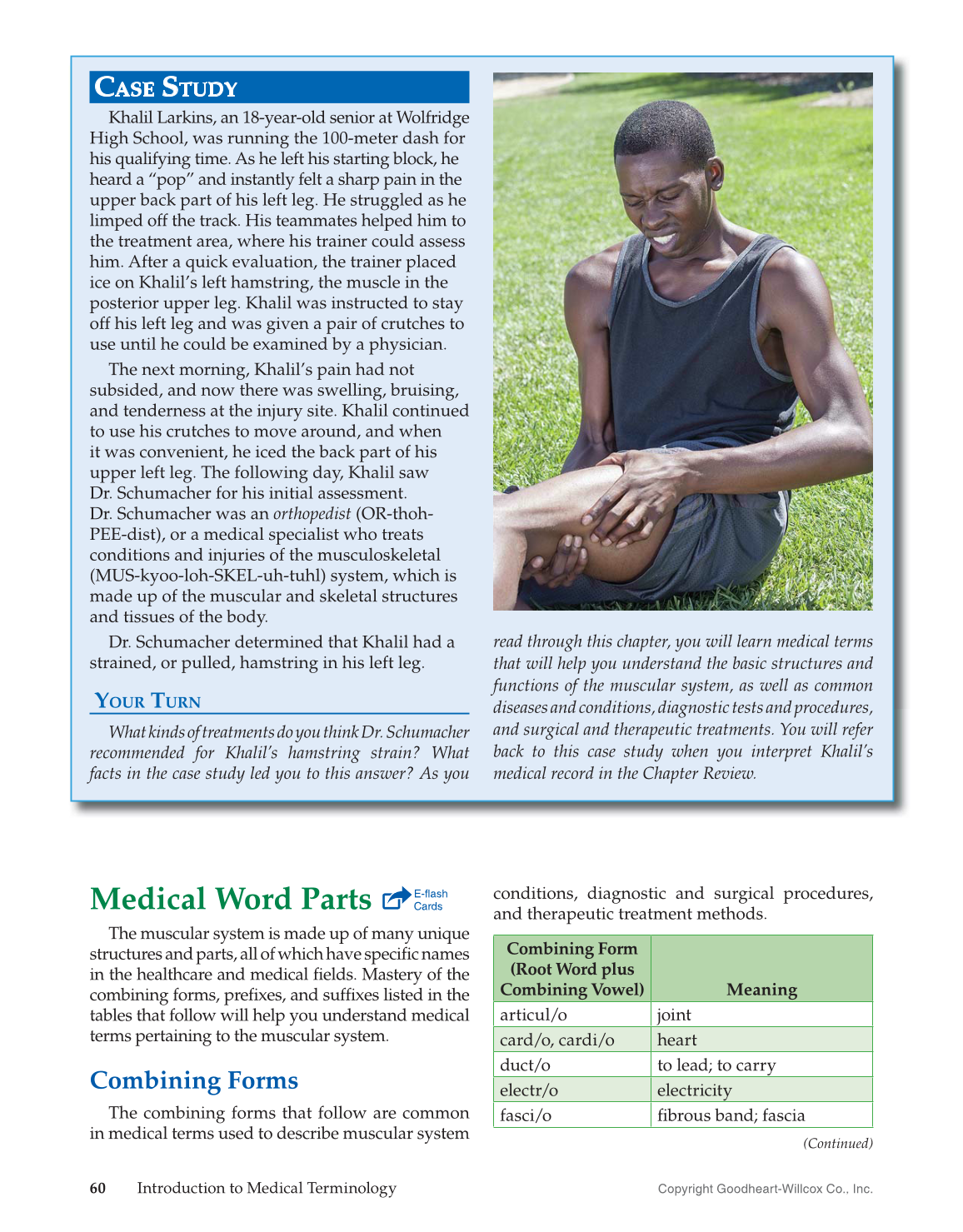60 Introduction to Medical Terminology
Copyright Goodheart-Willcox Co., Inc.
CASE STUDY C
ASE
S
TUDY
Khalil Larkins, an 18-year-old senior at Wolfridge
High School, was running the 100-meter dash for
his qualifying time. As he left his starting block, he
heard a “pop” and instantly felt a sharp pain in the
upper back part of his left leg. He struggled as he
limped off the track. His teammates helped him to
the treatment area, where his trainer could assess
him. After a quick evaluation, the trainer placed
ice on Khalil’s left hamstring, the muscle in the
posterior upper leg. Khalil was instructed to stay
off his left leg and was given a pair of crutches to
use until he could be examined by a physician.
The next morning, Khalil’s pain had not
subsided, and now there was swelling, bruising,
and tenderness at the injury site. Khalil continued
to use his crutches to move around, and when
it was convenient, he iced the back part of his
upper left leg. The following day, Khalil saw
Dr. Schumacher for his initial assessment.
Dr. Schumacher was an orthopedist (OR-thoh-
PEE-dist), or a medical specialist who treats
conditions and injuries of the musculoskeletal
(MUS-kyoo-loh-SKEL-uh-tuhl) system, which is
made up of the muscular and skeletal structures
and tissues of the body.
Dr. Schumacher determined that Khalil had a
strained, or pulled, hamstring in his left leg.
YOUR TURN
What kinds of treatments do you think Dr. Schumacher
recommended for Khalil’s hamstring strain? What
facts in the case study led you to this answer? As you
read through this chapter, you will learn medical terms
that will help you understand the basic structures and
functions of the muscular system, as well as common
diseases and conditions, diagnostic tests and procedures,
and surgical and therapeutic treatments. You will refer
back to this case study when you interpret Khalil’s
medical record in the Chapter Review.
Medical Word Parts
The muscular system is made up of many unique
structures and parts, all of which have specifi c names
in the healthcare and medical fi elds. Mastery of the
combining forms, prefi xes, and suffi xes listed in the
tables that follow will help you understand medical
terms pertaining to the muscular system.
Combining Forms
The combining forms that follow are common
in medical terms used to describe muscular system
conditions, diagnostic and surgical procedures,
and therapeutic treatment methods.
Combining Form
(Root Word plus
Combining Vowel) Meaning
articul/o joint
card/o, cardi/o heart
duct/o to lead; to carry
electr/o electricity
fasci/o fi brous band; fascia
(Continued)
E-flash
Cards
